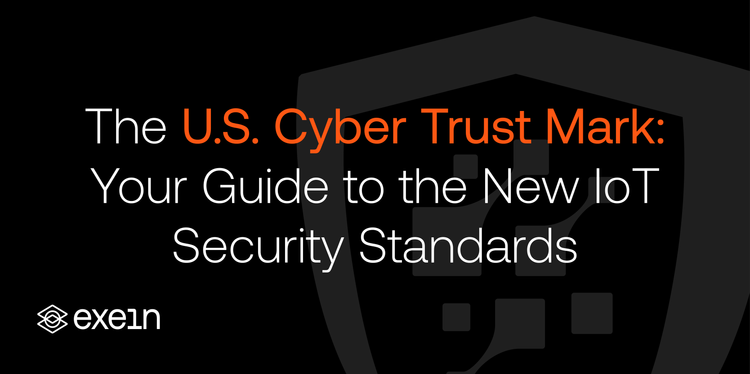Embedded Security as a Proactive Defensive Countermeasure

Cybersecurity is a top priority for organizations of all sizes and across all industries. With the rise of connected devices and the Internet of Things (IoT), the attack surface for cybercriminals has expanded exponentially.
Embedded systems, which are specialized computing systems that do not look like computers, are a critical component of this landscape. These systems are found in everything from automobiles to industrial control systems, and, unlike general-purpose computers, they are dedicated to specific tasks. Unfortunately, the traditional approach to cybersecurity, which focuses on reactive measures, is ill-suited to address the unique challenges posed by embedded systems. Instead, a proactive approach that incorporates embedded security as a defensive countermeasure is needed.
Proactive Security Measures
Proactive security measures are actions taken in advance to protect against potential threats, rather than reacting to an attack after it has occurred. These measures can take many forms, including regular system updates and patches, the use of firewalls and antivirus software, and regular security audits. However, for embedded systems, proactive security measures also include the incorporation of security features directly into the hardware and software of the system. This is known as embedded security.
Example of Embedded Security
A common example of embedded security is the use of secure boot processes. A secure boot process ensures that only authenticated and authorized software can run on the device. This is achieved by incorporating cryptographic signatures into the software, which are then verified by the hardware during the boot process. If the signatures do not match, the device will not boot. This prevents unauthorized or malicious software from running on the device, and is a crucial component of a proactive security strategy for embedded systems.
Embedded System Security
Embedded system security refers to the measures taken to protect the integrity, confidentiality, and availability of an embedded system. This involves a multi-layered approach that includes both hardware and software security features. Hardware security features may include secure boot processes, hardware-based random number generators, and secure key storage. Software security features may include the use of secure coding practices, regular software updates, and the implementation of security protocols.
Defensive Measures in Cybersecurity
Defensive measures in cybersecurity are actions taken to protect against cyberattacks. These measures can be either reactive or proactive. Reactive measures, such as intrusion detection systems and antivirus software, are important for identifying and mitigating attacks after they have occurred. However, proactive measures, such as embedded security and regular security audits, are crucial for preventing attacks from occurring in the first place. A comprehensive cybersecurity strategy must include both reactive and proactive defensive measures.
The New Way with AI-Enhanced Embedded Security
AI in Threat Detection and Response
Artificial Intelligence (AI) can significantly enhance the capabilities of threat detection and response in embedded security systems. Traditional security systems rely on predefined rules and signatures to identify threats. However, cyber attackers are continuously evolving their tactics, techniques, and procedures (TTPs), making it challenging for traditional systems to keep up. AI algorithms can analyze vast amounts of data in real-time to identify patterns and anomalies that may indicate a cyber attack. This enables the embedded security system to detect and respond to threats more quickly and accurately.
Machine Learning for Anomaly Detection
Machine Learning (ML), a subset of AI, is particularly well-suited for anomaly detection in embedded security systems. ML algorithms can be trained on vast amounts of data to learn what 'normal' behavior looks like for a particular system or device. Once trained, the ML model can continuously monitor the system or device to identify any deviations from the 'normal' behavior, which may indicate a cyber attack. This enables the embedded security system to detect previously unknown threats, also known as zero-day attacks.
AI-driven Security Automation
AI-driven security automation is another critical aspect of enhancing embedded security. Automation can help in responding to threats more quickly and efficiently, minimizing the potential damage. For example, an AI-driven security automation system can automatically isolate a compromised device from the network, preventing the spread of malware. It can also automatically update the security policies and rules based on the observed behavior of the system or device, thereby enhancing its security posture over time.
Why Exein
As the world of connected devices and embedded systems grows exponentially, the risks associated with cyberattacks rise in tandem. Traditional, reactive measures are no longer sufficient to combat the unique challenges posed by embedded systems.
A proactive approach, incorporating embedded security as a defensive countermeasure, is essential.
Integrating security features directly into the hardware and software of embedded systems, combined with a comprehensive cybersecurity strategy that includes both reactive and proactive measures, will help organizations defend against cyberattacks, ensuring the continued integrity, confidentiality, and availability of their systems. The integration of AI, ML, and AI-driven security automation in embedded security systems significantly enhances their ability to detect and respond to threats, providing a robust and resilient defense against cyberattacks.
Exein offers the perfect solution for embedded security with its Exein Runtime and Exein Analyzer.
Exein Runtime is a revolutionary intelligent IoT protection solution that leverages on-device machine learning to offer high-performance, automated, and up-to-date protection. It utilizes AI in Threat Detection and Response, Machine Learning for Anomaly Detection, and AI-driven Security Automation. Our AI monitors everything in real-time, learns from all attacks, and shares the information across all your devices and clients, also in real-time. This capability not only enhances the detection and response to threats but also contributes to the overall improvement of the security posture of the entire network of devices.
Exein Analyzer, on the other hand, helps identify threats to determine your organization’s cyber posture. Integrated with asset identification tools, it allows you to scan the security of your IoT fleet with ease. This holistic approach to security ensures that your organization is protected from all angles.
By choosing Exein as your embedded security solution, you are opting for a comprehensive and proactive approach to cybersecurity.
Not only will you benefit from the advanced capabilities of AI, ML, and automation, but you will also be ensuring the continued safety and success of your organization in an increasingly connected world. Don't wait for an attack to happen; take a proactive stance with Exein.




